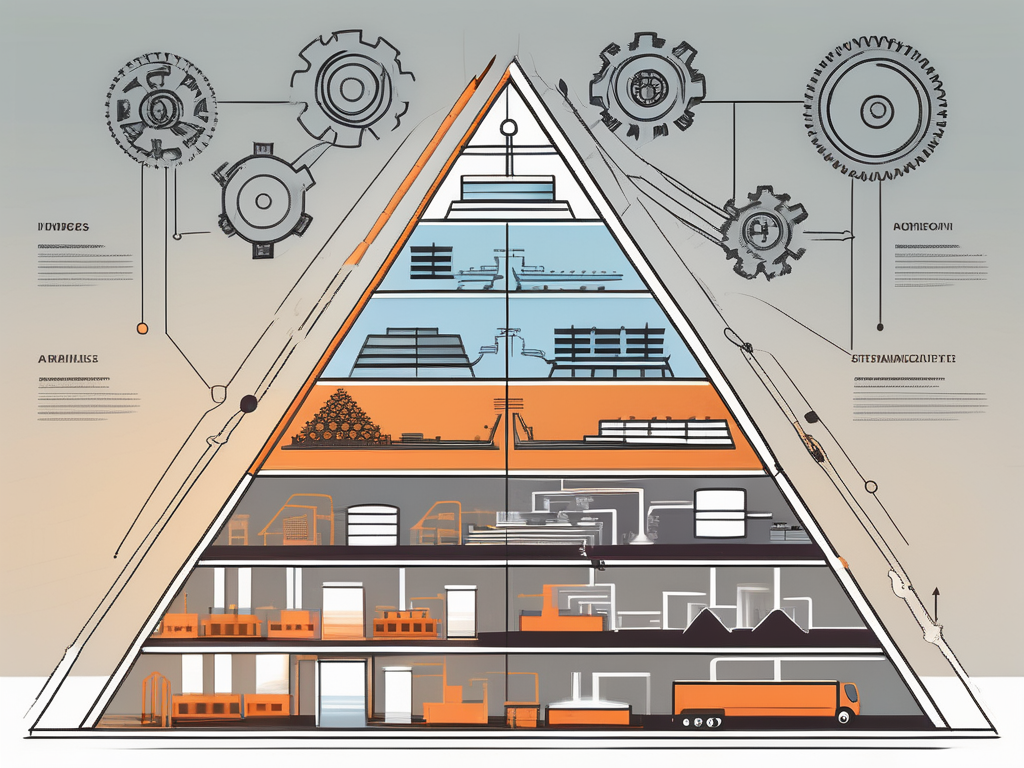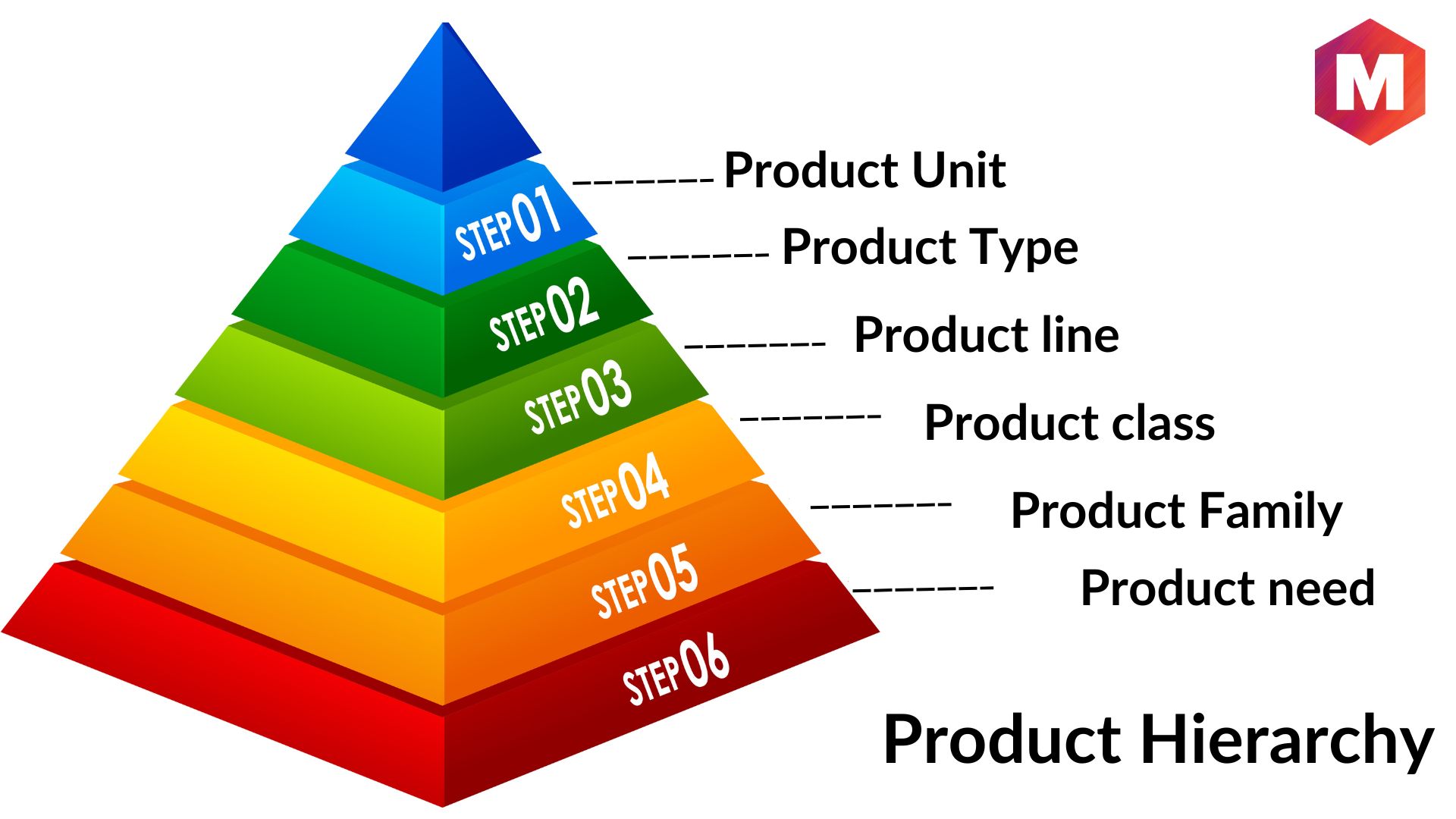
The Importance of Product Hierarchies in Streamlining Business Operations

In today's fast-paced business world, organizations are constantly seeking ways to optimize their operations and improve efficiency. One valuable tool that has gained attention in recent years is the use of product hierarchies. By understanding and implementing product hierarchies effectively, businesses can streamline their operations and achieve greater success. This article will explore the importance of product hierarchies in streamlining business operations and the benefits they offer.
Understanding Product Hierarchies
Before delving into the significance of product hierarchies, it is essential to have a clear understanding of what they are. Product hierarchies are hierarchical structures that classify and organize products based on their attributes and relationships. They define the relationships between products, allowing businesses to analyze and manage them efficiently.
Defining Product Hierarchies
In simple terms, a product hierarchy is a system that arranges products into categories and subcategories based on their characteristics, such as type, size, color, or functionality. Each category and subcategory represents a specific level within the hierarchy, forming a logical and systematic structure. This classification system enables businesses to navigate and manage their vast product catalogs more effectively.
Let's take a closer look at how product hierarchies work. Imagine a clothing retailer that offers a wide range of products, including shirts, pants, dresses, and accessories. To create a product hierarchy, the retailer would start with a root category, which in this case could be "Apparel." This root category encompasses all other categories within the hierarchy.

Below the root category, there are parent categories that represent broader groups of products. For example, under the "Apparel" category, there could be parent categories such as "Men's Clothing," "Women's Clothing," and "Children's Clothing." These parent categories provide a higher level of classification and help customers navigate through the product offerings more efficiently.
Within each parent category, there are child categories that provide further subcategorization. For instance, under the "Men's Clothing" category, there could be child categories like "Shirts," "Pants," "Suits," and "Accessories." These child categories allow for more specific classification and make it easier for customers to find the exact products they are looking for.
In addition to categories, product hierarchies also include attributes. Attributes are characteristics that define the products within each category. These can include features, specifications, or even pricing. For example, within the "Shirts" category, attributes could include "Short Sleeve," "Long Sleeve," "Button-Down," and "Collar Type." These attributes further differentiate the products and provide customers with more detailed information.
Components of Product Hierarchies
A typical product hierarchy consists of several components that work together to create a comprehensive framework. The main components include:
- Root Category: This is the highest level of the hierarchy and represents the broadest category possible, encompassing all other categories.
- Parent Category: Below the root category, there are parent categories that represent broader groups of products. These categories provide a higher level of classification.
- Child Category: These categories reside below the parent categories and provide further subcategorization. They allow for more specific classification.
- Attributes: Attributes are characteristics that define the products within each category. They provide more detailed information about the products.
By utilizing these components, businesses can create a robust product hierarchy that organizes their products in a logical and structured manner. This hierarchical structure not only helps businesses manage their product catalogs more efficiently but also enhances the customer experience by making it easier for them to find and select the products they desire.
The Role of Product Hierarchies in Business Operations
Now that we understand what product hierarchies are, let's explore why they are crucial in streamlining business operations.
Enhancing Efficiency in Operations
Product hierarchies play a key role in improving operational efficiency by providing a structured framework for organizing products. By classifying products into specific categories and subcategories, businesses can quickly locate and manage the items they need, reducing search time and increasing productivity.
For example, imagine a retail store that sells clothing. Without a product hierarchy, the store would have to search through a disorganized inventory to find a specific item, wasting valuable time and resources. However, with a well-defined product hierarchy, the store can easily navigate through different categories such as men's, women's, and children's clothing, and further narrow down the search by subcategories like shirts, pants, and accessories. This systematic approach ensures that products are easily accessible and minimizes the risk of errors or redundancies in inventory management.
Furthermore, product hierarchies enable businesses to optimize their supply chain management. By classifying products based on their attributes, such as size, color, or material, companies can streamline their procurement processes. This allows them to identify suppliers that specialize in specific product categories, negotiate better deals, and ensure consistent quality across their product offerings.
Facilitating Decision-Making Processes
Another significant advantage of product hierarchies is their ability to facilitate decision-making processes. By grouping products with similar attributes together, businesses can analyze and compare data more effectively.
For instance, let's consider a technology company that manufactures smartphones. By using a product hierarchy, the company can group its smartphones based on features, such as screen size, camera quality, and battery life. This categorization allows the company to analyze sales data for each product category and identify trends and patterns. With this information, the company can make informed decisions regarding product development, pricing, marketing strategies, and resource allocation.
The structured nature of product hierarchies allows for a comprehensive overview of the product portfolio. Businesses can easily identify which products are performing well and which ones require improvements or adjustments. This data-driven decision-making approach helps companies stay competitive in the market and adapt to changing customer preferences.
Moreover, product hierarchies also aid in forecasting and demand planning. By analyzing historical sales data for different product categories, businesses can predict future demand and adjust their production and inventory levels accordingly. This proactive approach minimizes the risk of stockouts or excess inventory, leading to improved customer satisfaction and cost savings.
Benefits of Streamlining Business Operations through Product Hierarchies
While the role of product hierarchies in operations is evident, let's explore the specific benefits they offer.
Improved Product Management
By implementing product hierarchies, businesses can gain better control and visibility over their product catalogs. The hierarchical structure allows for effective categorization and organization, simplifying product management tasks. With easy access to product information and attributes, businesses can optimize inventory management, pricing, and promotions. This, in turn, leads to improved customer satisfaction and increased sales.
Enhanced Customer Experience
Effective product hierarchies can also contribute to a better customer experience. By organizing products into logical categories, businesses can make it easier for customers to find what they are looking for. A well-structured hierarchy provides a seamless navigation experience, reducing customer frustration and increasing the likelihood of conversions. When customers can quickly locate and compare products, they are more likely to make informed purchasing decisions.
Implementing Product Hierarchies in Your Business
To reap the benefits of product hierarchies, businesses need to implement them strategically and overcome any challenges that may arise.
Steps to Develop a Product Hierarchy
The process of developing a product hierarchy involves several essential steps:
- Analyze Your Product Catalog: Evaluate your product catalog and identify the key attributes that define your products. These could include size, color, style, or any other relevant factor.
- Define Categories and Subcategories: Based on the attributes identified, establish a hierarchical structure by creating categories and subcategories. Ensure that the categories are mutually exclusive and comprehensive.
- Assign Products to Categories: Categorize your products according to their attributes. Assign each product to the appropriate category and subcategory.
- Review and Refine: Regularly review and refine your product hierarchy to ensure its accuracy and relevance. Adapt it to any changes in your product offerings or market demands.
Overcoming Challenges in Implementation
Implementing product hierarchies may present some challenges, such as resistance to change or difficulties in categorizing complex products. To overcome these challenges, it is important to communicate the benefits of product hierarchies to stakeholders and involve them in the implementation process. Additionally, leveraging technology solutions specifically designed for product hierarchy management can simplify the implementation and ongoing maintenance.
The Future of Product Hierarchies in Business Operations
As businesses continue to adapt to evolving market demands and technological advancements, the future of product hierarchies in streamlining operations looks promising.
Emerging Trends in Product Hierarchies
New trends are emerging in the world of product hierarchies. One such trend is the integration of artificial intelligence (AI) and machine learning (ML) technologies to automate the categorization and management of products. AI-powered systems can analyze vast amounts of data and automatically assign products to relevant categories, saving businesses valuable time and effort.
Adapting to Changes in Business Environments
As business environments change, product hierarchies must adapt accordingly. The ability to quickly restructure and update hierarchies is crucial to remain competitive. By staying agile and responsive to market shifts, businesses can ensure that their product hierarchies continue to optimize operations and support strategic decision-making.
Conclusion
In conclusion, product hierarchies play a vital role in streamlining business operations. By understanding product hierarchies, implementing them effectively, and leveraging their benefits, businesses can achieve greater efficiency, improved decision-making processes, and enhanced customer experiences. As technology continues to evolve, product hierarchies will remain a valuable tool for optimizing operational processes and driving business success.















